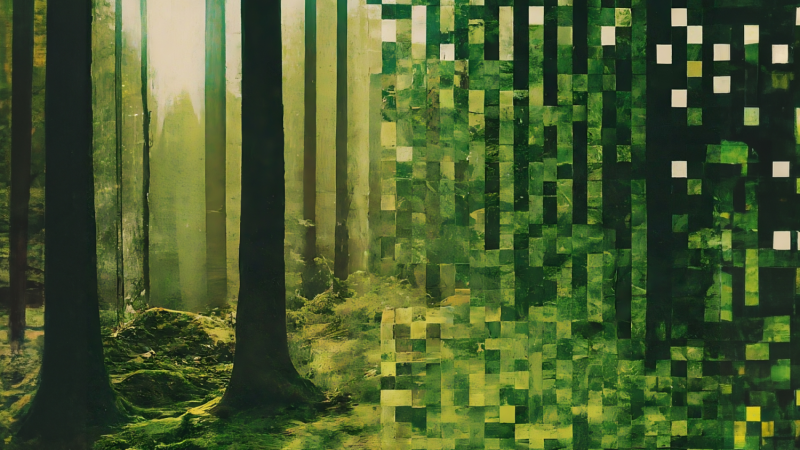Across a variety of industries, ranging from entertainment to AEC to manufacturing and many more, working within 3D environments is becoming more common. This doesn’t necessarily mean completing jobs in a theoretical metaverse complete with headsets – this is happening, but not commonly – but working with 3D models and running physically accurate simulations for myriad use cases. That has improved work in many ways, but with different stakeholders all working within a 3D model, new barriers have cropped up. Universal Scene Description (USD), originally created by Pixar for their workflows on films, is becoming the mechanism by which these barriers are being crossed, and thus important for those working within 3D ecosystems to know.
At Geo Week News, we’ve been covering some of the happenings around USD over the last year-plus, mostly around the recently formed Alliance for OpenUSD (AOUSD). In our conversations with those involved in 3D-focused work, it has seemed that most professionals are marginally familiar with USD, but the concrete knowledge is often lacking. Because of that, we decided that it would be a good idea to gather a panel of experts from companies involved in the AOUSD for a high-level webinar outlining some of the key features and best practices around USD.
The hour-long discussion, which was moderated by the author of this article, featured the following speakers:
Marco Tillmann - Senior Product Manager, Omniverse, Digital Twin, NVIDIA
Kim Nyberg - Senior Technology Director, Trimble
Dave Braig - Senior Product Manager, Cesium
In this article, you will find a quick recap highlighting just a few of the talking points during the conversation. For your free on-demand recording of the webinar, along with relevant slides, fill out the form find in the link below.
Before diving into the discussion between the three experts, Tillmann took the reins at the start for a quick presentation to serve as a primer for USD and AOUSD. Through this short, roughly seven-minute primer, Tillmann hit a couple of key topics around the area, including the history. As mentioned above, USD was originally developed by Pixar for their own internal purposes before being made open source in 2016. Since then, adoption has crossed a number of different industries, eventually resulting in the creation of the AOUSD, which in addition to the companies involved in this webinar boasts companies like Apple, Autodesk, Adobe, and others among its members. Tillmann also talked about USD itself, including both what it is and what it’s not.
“It’s really important to mention that USD is not just a file format,” Tillmann told the webinar audience. “It’s a data ecosystem for virtual worlds through which existing data formats can travel. Its architecture allows compact, collaborative workflows and collaborative modifications in layers of geometry, materials, animation, and more, and deciding which one to use at any point in time instead of making changes to the original.”

Following that presentation – which certainly included more information than what’s mentioned above – the panel discussion began and covered the last roughly 45 minutes of the webinar. There were a lot of important points made during the discussion, and we’ll highlight two that stood out in particular.
The first of those is the idea around interoperability and integrations. This is, ultimately, the crux of USD’s importance in the 3D ecosystem, as it allows multiple stakeholders to work within a 3D model even if they are working with different formats. To that end, the idea of it being “non-destructive” was a theme that emerged throughout the conversation as one of its most important features. Essentially, it allows different parts of the projects who may work in different data formats to share and collaborate without having to impede too much on other parts of the work.
This is something that comes up with Trimble’s AEC-focused user base, Nyberg shared. “Our customers, they work in different aspects of a building, for example you have the MEP design, or a structural engineer, or the architect – they are all responsible for data. USD allows for sharing, and you can be sure that nobody touches your data. They can see it, they can build on top of it, but the original data stays. That’s super important for our customers.”
For Braig’s part, Cesium has long been at the forefront of working within the 3D ecosystem and have developed their own data formats like 3D Tiles, which is a standard with the Open Geospatial Consortium (OGC). He spoke a bit to the integration and interoperability within these workflows.
“A lot of the current 3D workflows are built on these open standards that are bringing together these complementary capabilities. We look at something like USD, and Marco mentioned it’s a great ecosystem for bringing in other things. From the Cesium side, we can stream those 3D Tiles right into the USD framework, again unlocking and providing a lot of that real-world context.”
In addition to talking broadly about the benefits of USD itself, the group also discussed AOUSD specifically and the importance of that group. NVIDIA was one of the founding members of the group, and Tillmann acknowledged that it took some time between Pixar first making USD open source and when AOUSD was announced. In that time, he noted that they say different industries starting to adopt 3D workflows and that open collaboration became important.
“Generally speaking, open source just by nature provides more value,” he said. “It speeds up innovation and reduces friction between these parties because of its collaborative nature.”
Nyberg noted that for Trimble, who was among the more recent additions to the group, they began to see some of their “key customers” looking into the ecosystem, and they had identified some key working groups which could benefit their workflows. Cesium, meanwhile, was an earlier member and Braig calls out their existing relationship with the 3D ecosystem with the aforementioned 3D Tiles as well as gLTF, making their relationship with USD and AOUSD a natural one.
These are just a couple of the topics touched upon in this 60-minute conversation, with many other insights including those from questions that came from the audience shared as well. For the free on-demand recording of the discussion, fill out the short form at the link below.






